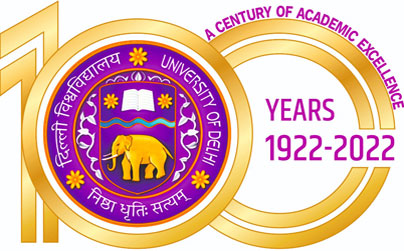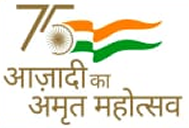Leadership Excellence Through the Gita
Credits
Lecture
Tutorial
Practical/Practice
Eligibility criteria
Pre-requisite of the course
- To demonstrate how Bhagavat Gita conceptualizes leadership and its role in developing the self and society
- To build skills and competencies for leadership excellence
- To illustrate the importance of righteousness, ethics and compassion through the wisdom of Gita
- Analysis of one’s strengths and weaknesses as a leader (SWOC of Self)
- Develop leadership techniques
- Becoming ethical and compassionate leaders
- Identify the qualities of a responsible leader
UNIT- I Decoding Leadership through Gita (5 hours)
- Defining the role of a leader in terms of Dharma, Adharma and Arajkata and Loksangrah
- Understanding the nuances of Dharma: Concept of Swa-Dharma, Ashrama-Dharma and Apad-Dharma (Extraordinary situations): Rights and Responsibilities
- Excellence in a leader –Concepts of Karma, Vikarma and Akarma
UNIT- II : Developing Leadership Qualities
- Leader a Karmayogi: Aspirational, Focused, Compassionate and Equanimous
- Triguna model: Sattva, Rajas, Tamas
- Nurturing excellence in leadership by:
a. Reducing Tamas
b. Balancing Rajas
c. Increasing Sattva
UNIT- III Ethical and compassionate Leadership (3 hours)
- Yajna – Give back to nature
- Dana – Give back to Society
- Tapas- Remove weakness in self
UNIT - IV Case Studies of Leaders from Modern Bharat (3 hours)
- Lessons from life – Swami Vivekanand, Gandhi, APJ Abdul Kalam, Ratan Tata
- Students will do a SWOC (Strength, Weakness, Opportunity and Challenges) analysis of their personality as a Leader. Make a list of Opportunities (O) available to you for nurturing excellence in leadership.
- Students will share a story with the class when in a difficult situation they took responsibility and displayed excellence as a leader.
- Based on Dharma and Swadharma concepts students will make a list of the rights and responsibilities associated with them at the level of Self and Family.
- As a youth how can you contribute towards the wellbeing of your community /campus (lokasangrah).
- Sit in a group and discuss: (a) what are the Tamasik behaviors that you and your friends have and would like to reduce.
- What changes can you make in your lifestyle (diet, habits and activities) to increase Satwik guna in your personality.
- Practice Single Pointedness and Focus: Sit with your eyes closed and focus your attention unwaveringly on one particular sound that is there in your immediate environment.
- Keep your attention on your breath while breathing in and breathing out. Do this 20 times (10 rounds). This will develop stability of the mind and balance emotions.
- Plan some activities for the wellbeing of the campus which you as a student ( or part of team ) can do voluntarily to inculcate the spirit of yajna (Sewa). OR to practice the attitude of tapasya take up a project for the good of others and work on it without expecting rewards with full dedication for a few months.
- Find ways of developing an attitude of dana.
- Make a timetable for yourself for the next three months showing the things that you will do to develop your leadership skills.
- Any other Practical/Practice as decided from time to time by the teacher.
- The Message of the Gita as interpreted by Sri Aurobindo. Shri Aurobindo Ashram Publication Department, Pondicherry
- The Bhagawad Geeta Chapter XVIII by Swami Chinmayananda. Central Chinmaya Mission Trust, MUMBAI.
- Talks on the Gita by Vinoba Bhave https://www.mkgandhi.org/talksongita/talk_gita.php
- Essays on The Gita by Shri Aurobindo. Shri Aurobindo Ashram Publication Department, Pondicherry.
- The Bhagavad Gita for Daily Living. Eknath Easwaran. Vols I, II & III. Jaico Publishing House
- Bhagavad-gita (with Vaishnava commentaries) by Narayana Gosvami, MLBD, 2013
- श्रीमद्भगवद् गीता (साधक हिन्दी टीका), Gita Press, Gorakhpur
- The Bhagavadgītā Or The Song Divine (With Sanskrit Text and English Translation) Gita Press, Gorakhpur
- From The Bhagavad Gita for Daily Living by Eknath Easwaran. Vols I, II & III. Jaico Publishing House
• Dharma & Swadharma. Pages 196 & 197; Slokas 35,36 &38 (Chapter 3)
• Karma, Vikarma & Akarma Pages 245,24, & 247; Slokas 16,17&18, (Chapter 4)
- From The Bhagawad Geeta, Chapter XVIII by Swami Chinmayananda. Central Chinmaya Mission Trust, MUMBAI.
• The Triguna theory - Satwik, Rajasik , Tamasik Gunas
o Three types of Karma- Page 46, Sloka 23, 24, & 25 (Chapter 18)
o Three types of Actors- Page 52 Sloka 26, 27, 28 (Chapter18)
o Three types of Bhuddhi- Page 60, Sloka 30,31, & 32 (Chapter 18)
o Three types of Dhriti- Page 66, Slokas 33,34 &35 (Chapter 18)
o Three types of Happiness- Page 72, Slokas 36,37&3 (Chapter 18)
• Varna Ashram, Pages 88,89, & 90 Sloka; 41,42, & 43 ( Chapter 18)
- From Talks on the Gita by Vinoba Bhave https://www.mkgandhi.org/talksongita/talk_gita.php
• Karmayogi. Pages 37-45 (Chapter 3)
• Yajna, Dana & Tapasya. Pages 229, 230 & 231; Sloka 11 to 26 (Chapter 17)
Examination scheme and mode: Subject to directions from the Examination Branch/University of Delhi from time to time


